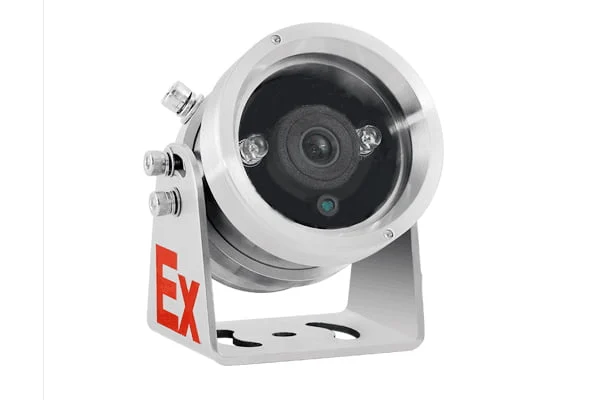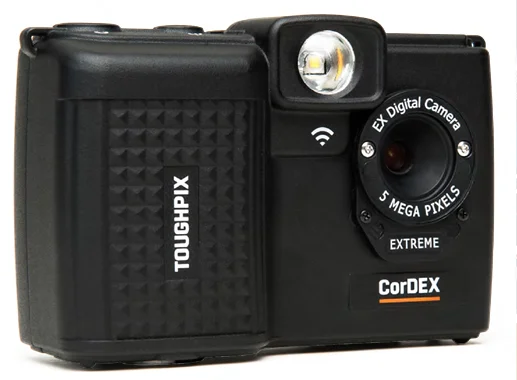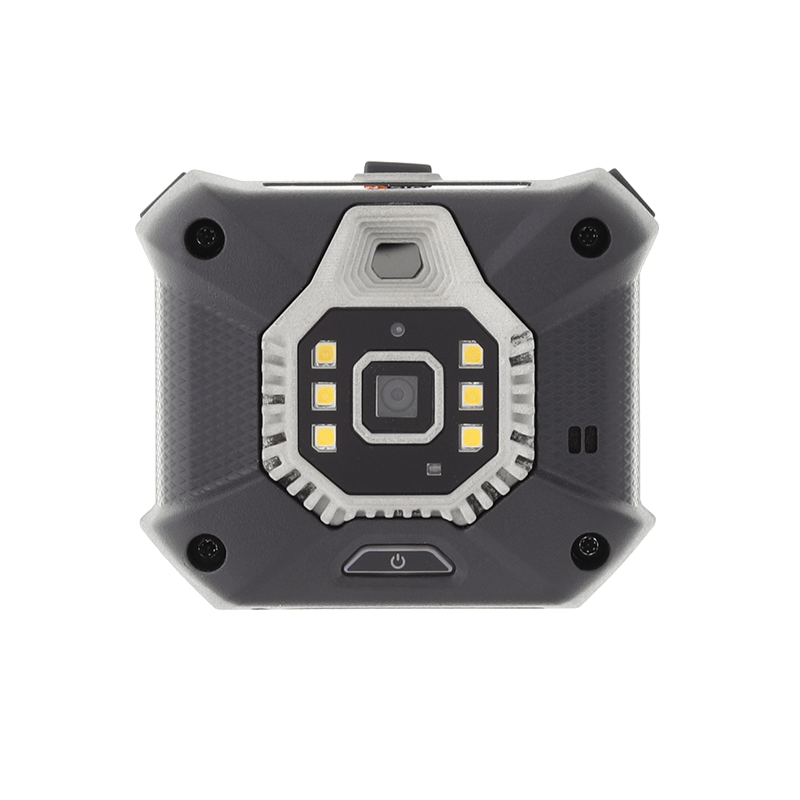Intrinsically safe cameras are specialized devices designed to operate safely in hazardous environments where the presence of flammable gases, vapors, or dust could pose a significant risk. These cameras are crucial for industries such as oil and gas, petrochemicals, mining, and manufacturing, where safety is paramount. In this buyer’s guide, we will explore the key features, certifications, and considerations to keep in mind when purchasing intrinsically safe cameras.
Understanding Intrinsically Safe Cameras.
- Intrinsically Safe Certification: Arguably, the most critical aspect of an intrinsically safe camera is its certification. Ensure that the camera meets the required safety standards, such as ATEX or UL, which certify that the device will not ignite the surrounding atmosphere under normal or fault conditions.
- Durability: Intrinsically safe cameras must withstand harsh conditions. Look for cameras with rugged designs that can endure drops, impacts, extreme temperatures, and exposure to dust and moisture.
- Image Quality: Assess the camera’s image quality, resolution, and low-light performance. Depending on your specific application, you may require cameras with high-resolution sensors and low-light capabilities for clear imaging in challenging environments.
- Battery Life: You need to consider the camera’s battery life, especially if you’ll be using it in remote locations or for extended periods. Some intrinsically safe cameras offer long-lasting batteries or the option to swap out batteries in the field.
- Connectivity: Determine the connectivity options you need. Many intrinsically safe cameras offer wireless connectivity, allowing for remote monitoring and data transfer. Ensure the camera supports the necessary communication protocols for your workflow.
- Ease of Use: User-friendly interfaces and intuitive controls are essential, especially in hazardous environments where users may be wearing gloves or protective gear.
- Accessories and Mounting: Check if the camera comes with mounting options or accessories, as these can be critical for specific applications. Mounting options can include helmet mounts, chest mounts, or tripod compatibility.
- Maintenance and Support: Consider the availability of maintenance and support services. Reliable customer support and readily available spare parts can be crucial for minimizing downtime.
ATEX Zone 1 vs. ATEX Zone 2 Cameras.
When it comes to choosing intrinsically safe cameras for hazardous environments, understanding the distinctions between cameras in different ATEX Zones is crucial. ATEX Zone 1 cameras are specifically engineered for locations where explosive atmospheres are present frequently or continuously. These cameras adhere to stringent safety requirements to prevent any electrical or thermal sparks that could potentially ignite the hazardous atmosphere. They are typically used in high-risk environments like petrochemical plants and oil refineries, where safety is paramount.
In contrast, ATEX Zone 2 cameras are designed for areas where explosive hazards are less likely to occur, usually on an intermittent basis. While they still incorporate safety features, these cameras do not need to meet the same stringent criteria as Zone 1 cameras. As a result, Zone 2 cameras are often more cost-effective and are commonly employed in industries such as food processing and pharmaceuticals, where the risk of explosive atmospheres is comparatively lower.
When making a decision between Zone 1 and Zone 2 cameras, several factors should be considered. Budget constraints, compliance with safety regulations, and the nature of your operations all come into play. It’s essential to evaluate your specific hazardous area classification and the level of risk involved before selecting the most suitable camera for your needs. Ultimately, both ATEX Zone 1 and Zone 2 cameras serve a crucial role in enhancing safety and surveillance in environments with potential explosive atmospheres.
Choosing the Best Camera for You.
Most intrinsically safe cameras share common features with slight variations on some characteristics. At intrinsically safe store, we offer a wide selection for you to choose from. Let’s look at some of them:
- CorDEX: CorDEX offers a range of intrinsically safe cameras designed for hazardous environments, particularly in the oil and gas, chemical, and mining industries. One of its popular cameras is the CorDEX ToughPix DigiTherm TP3REX Digital Camera which has ATEC, IECEX and MET certifications.
- Ecom Instruments (Pepperl+Fuchs): Ecom Instruments, a part of Pepperl+Fuchs, specializes in rugged communication and measurement devices, including IS cameras, smartphones, and tablets. In our collections we have the Ecom Cube 800 Wearable Camera which has adaptable design, it can be securely attached to a helmet, held by hand, or mounted on a monopod, enabling industrial workers to carry out tasks without using their hands, ensuring safety.
- BARTEC PIXAVI: This brand specializes in creating intrinsically safe cameras and communication devices for hazardous environments, including the oil and gas industry. The Bartec Pixavi Cam stands out as the top-rated explosion-proof camera available today. Equipped with the Android 9.0 operating system, this device delivers exceptional photo quality and offers 4K video recording capabilities. It is designed for use in industrial settings, providing resistance to explosions, water, and dust.
Comparing CorDEX ToughPix DigiTherm TP3REX,Ecom Cube 800 Wearable Camera and Bartec Pixavi Cameras.
| Features | BARTEC PIXAVI | Ecom Cube 800 Wearable Camera | CorDEX ToughPix DigiTherm TP3REX Digital Camera |
|---|---|---|---|
| Certification | ATEX/IECEx Zone 1 & 2, IP68 | ATEX/IECEx Zone 1 & 2, IP68 | ATEX/IECEx Zone 1 & 2, IP54 |
| Operating System | Android | Android | Windows Embedded Handheld 6.5 |
| Camera Resolution | Varies (up to 13 MP) | 13 MP | 8 MP |
| Video Recording | 1080p or 4K | 1080p | 720p |
| Ruggedness | Explosion-proof, water-resistant, dust-proof | Explosion-proof, water-resistant, dust-proof | Explosion-proof, water-resistant, dust-proof |
| Mounting Options | Helmet, handheld, monopod | Wearable, tripod | Tripod |
| Battery Life | Varies (typically several hours) | Up to 16 hours | Up to 8 hours |
| Connectivity Options | Wi-Fi, Bluetooth | Wi-Fi, Bluetooth | Wi-Fi, Bluetooth |
| Intrinsically Safe Apps | Yes | Yes | No |
The ToughPix DigiTherm TP3REX camera is certified for use in ATEX/IECEx Zone 1 & 2 environments, boasting an IP54 rating for protection against dust and water. Running on the Windows Embedded Handheld 6.5 operating system, it offers a resolution of 5 MP for images and 720p video recording. While it’s not as rugged as its counterparts, it provides a reliable option for hazardous areas and offers tripod mounting for added versatility. With a battery life of up to 8 hours, it can capture critical information in challenging conditions.
Ecom Cube 800 Wearable Camera is engineered for use in ATEX/IECEx Zone 1 & 2 and is rated IP68, signifying excellent resistance to dust and water. Operating on the Android platform, it features a 13 MP camera capable of 1080px video recording. Its versatility shines with both wearable and tripod-mounting options, making it suitable for a wide range of applications. This camera boasts an impressive battery life of up to 16 hours, ensuring extended use in hazardous environments. Additionally, it supports intrinsically safe apps for added functionality.
Bartec Pixavi Cameras come with ATEX/IECEx Zone 1 & 2 certification and an IP68 rating, making them highly resistant to environmental challenges. These cameras run on the Android operating system and offer varying resolutions, with some models supporting up to 13 MP and 4K video recording. Bartec Pixavi cameras are renowned for their flexibility, with mounting options that include helmet, handheld, and monopod configurations. While battery life varies by model, they typically offer several hours of operational time. Furthermore, they support intrinsically safe apps for added utility.
So What Value Do You Exactly Get From Purchasing Intrinsically Safe Cameras?
Intrinsically safe cameras offer significant benefits in industries and environments where safety is paramount, and there’s a risk of explosion due to flammable gases, vapors, or dust. Let’s explore the key advantages they provide:
- Enhanced Safety: The primary purpose of intrinsically safe cameras is to ensure the safety of workers and equipment in hazardous environments. They’re designed to prevent any electrical or thermal source within the camera from igniting the surrounding atmosphere, reducing the risk of explosions and fires.
- Compliance with Regulations: Intrinsically safe cameras meet stringent safety standards and certifications (e.g., ATEX, UL, IECEx) mandated by regulatory authorities. Using these cameras helps companies comply with safety regulations, reducing the potential for accidents and legal liabilities.
- Documentation and Inspection: These cameras allow workers to document and inspect equipment and processes in hazardous areas. This is crucial for maintenance, troubleshooting, and ensuring equipment integrity without compromising safety.
- Remote Monitoring: Many intrinsically safe cameras come equipped with wireless connectivity, enabling remote monitoring and real-time data transfer. This feature enhances situational awareness and allows for an immediate response to any issues.
- High-Quality Imaging: Intrinsically safe cameras offer various features, including high-resolution sensors, advanced optics, and low-light capabilities, ensuring high-quality images and videos even in challenging environments.
- Versatility: These cameras are available in various form factors, such as handheld, wearable, and mountable options. This versatility allows them to meet the diverse needs of different industries and applications.
- Durability: Intrinsically safe cameras are built to withstand rugged conditions, including drops, impacts, extreme temperatures, and exposure to dust and moisture. This durability ensures longevity and reliability.
- Increased Efficiency: These cameras improve workflow efficiency by enabling workers to perform tasks safely and document them on the spot. This reduces the need for additional trips to and from hazardous areas.
- Cost Savings: While the upfront cost of intrinsically safe cameras may be higher than conventional cameras, they help prevent accidents, equipment damage, and downtime, ultimately resulting in cost savings in the long run.
- Peace of Mind: Knowing that you’re using equipment certified as intrinsically safe provides peace of mind to both workers and management, fostering a safer work environment.
FAQs
Q: Are intrinsically safe cameras more expensive than regular cameras?
A: Yes, intrinsically safe cameras typically come at a higher price point due to their specialized design and safety features. However, the investment is essential for ensuring safety in hazardous environments.
Q: Can I use a regular camera in a hazardous area with protective enclosures?
A: While protective enclosures can mitigate some risks, they do not guarantee safety. Intrinsically safe cameras are purpose-built to prevent ignition sources, making them the safer choice.
Pro Tip: Take advantage of our promotional campaign to get an IS camera at a discounted price.
Discover Safety and Precision: Explore Our Intrinsically Safe Cameras.
Intrinsically safe cameras and explosion-proof digital cameras are well-suited for capturing photos and videos in perilous settings, including those susceptible to explosions.
Whether you’re a thermographer seeking cameras equipped with infrared features or a service engineer requiring high-resolution imagery in dangerous zones, you can rest assured that you will discover precisely the camera you require within our collection of reliable and robust digital cameras.
Check out a suitable collection for your company at intrinsically safe store and gurantee safety for your staff while capturing perfect images.





























